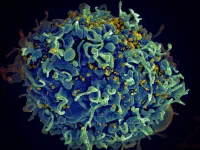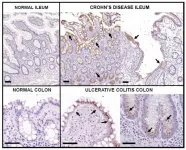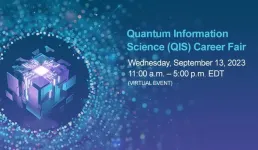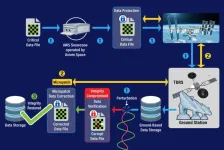A new mechanism encouraging the brain to self-repair after an ischemic stroke
2023-08-10
(Press-News.org)
Researchers from Tokyo Medical and Dental University (TMDU) identify lipids stimulating self-repair mechanisms in the brain after ischemic stroke
Tokyo, Japan – Patients often experience functional decline after an ischemic stroke, especially due to the brain’s resistance to regenerate after damage. Yet, there is still potential for recovery as surviving neurons can activate repair mechanisms to limit and even reverse the damage caused by the stroke. How is it triggered though?
In a study published recently in Neuron, researchers from Tokyo Medical and Dental University (TMDU) provided new insights regarding this question by identifying a new mechanism. They discovered that neurons surrounding the area of cell death secrete lipids that can trigger brain-autonomous neural repair after ischemic brain injury.
An ischemic stroke occurs when the blood supply to the brain is blocked and results in the death of brain cells. This condition is life-threatening, and patients will likely develop functional disabilities. Although the adult brain can self-repair, the underlying mechanisms need further clarification.
Inflammation of the brain contributes to the effects of ischemic stroke. “There is evidence that more lipids are produced after tissue injuries and contribute to regulating inflammation,” says Takashi Shichita, senior author of the study. “We investigated the changes in lipid metabolite production in mice after ischemic stroke. Interestingly, the levels of a specific fatty acid called dihomo-γ-linolenic acid (DGLA) and its derivatives increased after the stroke.”
The researchers further discovered that a protein known as PLA2GE2 (Phospholipase A2 Group IIE, an enzyme) mediates DGLA increase. By manipulating the expression of PLA2GE2, they also showed its impact on functional recovery. Deficiency of PLA2GE2 led to more inflammation, lower expression of factors stimulating neuronal repair, and more tissue loss. The team carried on with identifying the targets of PLA2GE2/DGLA.
“When we look at genes expressed in mice lacking PLA2GE2, we found low levels of a protein called peptidyl arginine deiminase 4 (PADI4),” explains Akari Nakamura, lead author of the study. “PADI4 regulates transcription and inflammation. Remarkably, expressing PADI4 in mice limited the extent of tissue damage and inflammation after ischemic stroke!” Additionally, the study shows that PADI4 promotes the transcription of genes involved in brain repair. It also identifies the whole signaling pathway involved in this process.
Most data were obtained in a mouse model of ischemic stroke. Yet, the recovery pathway likely exists in humans as the researchers found that neurons surrounding the stroke site express PLA2G2E and PADI4 in humans. Moreover, another recent study reported that the lower serum DGLA level was correlated with the severe ischemic stroke and cognitive disorders in humans.
This study describes a new mechanism that triggers brain repair after an ischemic stroke, which might lead to the development of compounds promoting PADI4’s effects, that stimulate the recovery of patients. It could also change our current understanding and approach toward Eicosapentaenoic acid (EPA) or Docosahexaenoic acid (DHA), as the only beneficial lipids for preventing atherosclerosis and vascular diseases.
###
The article, “PLA2G2E-mediated lipid metabolism triggers brain-autonomous neural repair after ischemic stroke,” was published in Neuron at DOI: 10.1016/j.neuron.2023.06.024
END
[Attachments] See images for this press release:
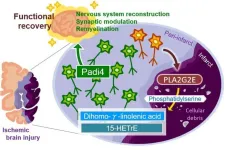

ELSE PRESS RELEASES FROM THIS DATE:
2023-08-10
The researchers also identified three proteins that are needed for the virus to carry out the invasion and have in turn synthesized molecules (potential drugs) that can target one of the proteins, potentially leading to new treatments for AIDS.
“We have revealed a protein pathway that appears to have a direct impact on diseases, which opens up a new area for potential drug development,” says the study’s senior author Aurelio Lorico, MD PhD, Professor of Pathology and interim Chief Research Officer at Touro University Nevada College of Osteopathic Medicine.
HIV infection requires the virus to enter a cell and gain access to the well-guarded nucleus in order ...
2023-08-10
New research from Memorial Sloan Kettering Cancer Center (MSK) and the Sloan Kettering Institute — a hub for basic science and translational research within MSK — found a potential target against neuroendocrine transformation in lung and prostate cancers; discovered new clues about why donor T cells attack certain tissues in graft-versus-host disease; shed light on why T cells let go of their prey; and used CRISPR interference and dynamic cell-state transitions to discover enhancers that affect early human development.
Targeting exportin 1 may help prevent neuroendocrine transformation in lung and prostate cancers
Over time, some lung and prostate ...
2023-08-10
A new study of mice and lab-grown human colon “organoids” indicates that an experimental drug developed by Johns Hopkins Medicine researchers can substantially reduce symptoms of inflammatory bowel disease (IBD) in pre-clinical models.
The experimental drug, given orally, inhibits a gut enzyme that is overproduced in people and in animal models of IBD, a disorder estimated by the U.S. Centers for Disease Control and Prevention to afflict more than 3 million adult Americans.
A report on the new study was published Aug. 9 in Science Translational Medicine.
IBD, a disease category that includes Crohn’s ...
2023-08-10
NASA’s Parker Solar Probe executed a short maneuver on Aug. 3, 2023, that kept the spacecraft on track to hit the aim point for the mission’s sixth Venus flyby on Monday, Aug. 21, 2023.
Operating on preprogrammed commands from mission control at the Johns Hopkins Applied Physics Laboratory (APL) in Laurel, Maryland, Parker fired its small thrusters for 4.5 seconds, enough to adjust its trajectory by 77 miles and speed up – by 1.4 seconds – its closest approach to Venus. The precise timing and position are critical to that flyby, the sixth of seven approaches in which Parker uses the planet’s gravity to tighten ...
2023-08-10
Scientists from the German Cancer Research Center (DKFZ) and the Cambridge Stem Cell Institute have developed an AI system that recognizes and characterizes white and red blood cells in microscopic images of blood samples. The algorithm can help physicians diagnose blood disorders and is available as an open source method for research purposes.
Blood disorders are often characterized by altered numbers and aberrant shapes of red and white blood cells. To diagnose the diseases, physicians classically examine blood smears on a slide under a microscope. This type of diagnosis is straightforward, but evaluation by experienced experts is difficult because the changes are sometimes ...
2023-08-10
UPTON, NY– Registration is now open for the third Quantum Information Science Career Fair hosted by the U.S. Department of Energy (DOE) Office of Science’s National Quantum Information Science (QIS) Research Centers. The virtual event takes place on Wednesday, Sept. 13.
The event aims to make undergraduates, graduate students, postdocs and early-career professionals aware of the wide range of QIS careers they can pursue—including technical and scientific roles as well as positions that facilitate research and bring awareness to the field, such as ...
2023-08-10
(WASHINGTON, August 10, 2023) – Researchers in Italy have shown for the first time that among children who have undergone a donor stem cell transplant, the presence of diverse species of micro-organisms in the intestinal tract before the transplant resulted in significantly better overall patient survival and fewer complications. The study, published today in the journal Blood, adds to a growing body of research unraveling the role gut health plays in health outcomes.
“Our study provides the first evidence of a relationship between pre-transplant microbial diversity in the intestinal tract and post-transplant ...
2023-08-10
San Antonio – August 10, 2023 – Southwest Research Institute developed an algorithm to remotely update and repair spacecraft software using less time and data than conventional techniques.
The tool not only improves the overall efficiency of satellite software transmissions but also can recover data from failed over-the-air updates and malicious cyberattacks. It works by identifying missing bytes and other errors before deploying a custom “micropatch” to the damaged or missing software.
“Instead of updating an entire file or operating system, which is typically required with over-the-air satellite software updates, our ...
2023-08-10
New research confirms fracking causes slow, small earthquakes or tremors, whose origin was previously a mystery to scientists. The tremors are produced by the same processes that could create large, damaging earthquakes.
Fracking is the high-pressure injection of fluids underground to extract oil and natural gas. Though it is typically done with wastewater, this study examined data from fracking with liquid carbon dioxide. The process pushes carbon underground and keeps it from trapping heat in Earth’s atmosphere.
By some estimates, carbon dioxide fracking could save as much ...
2023-08-10
London, United Kingdom, 10 August 2023 – Four major clinical trial networks based in low resource settings are embarking on an exciting partnership with the Good Clinical Trials Collaborative (“GCTC”) to enhance clinical research in low resource settings. By promoting the unique qualities of randomized controlled trials (RCTs) and the evidence they produce, the collaboration aims to support regional research ecosystems to prioritize collaborative, informative and efficient research responses to public health challenges.
ADVANcing Clinical Evidence in Infectious Diseases (“ADVANCE-ID”), Africa ...
LAST 30 PRESS RELEASES:
[Press-News.org] A new mechanism encouraging the brain to self-repair after an ischemic stroke


